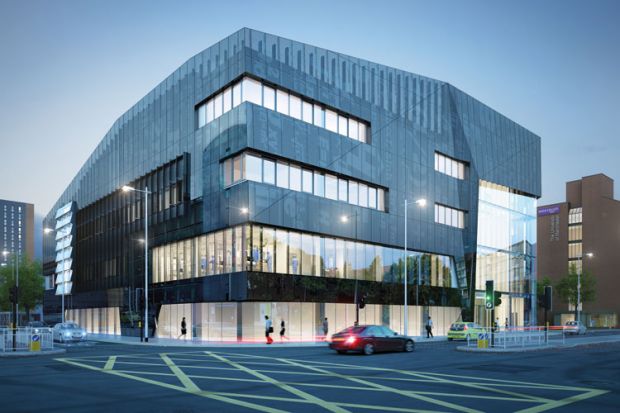The University of Manchester has successfully trademarked the term “Graphene City” in its bid for the North West to win the global race to commercialise the wonder material.
Luke Georghiou, Manchester’s vice-president for research and innovation, said that the institution had protected the name as part of a plan to build a “thriving knowledge-based economy” in the city around the substance.
But before Graphene City can thrive there is still the hurdle of attracting investment to overcome, Professor Georghiou told the annual conference of the Association for University Research and Industry Links, held in Manchester last week.
Speaking to Times Higher Education, he said that if this was not forthcoming it would be a blow for the UK.
“If we fail, graphene will not fail, it will simply be exploited in other countries who are also investing very hard in it,” he said.
The university has sunk resources into the world’s thinnest material since Manchester researchers Andre Geim and Konstantin Novoselov secured a Nobel prize for its discovery. As well as supporting graphene research, the institution has raised £61 million to establish the National Graphene Institute, which will enable researchers to validate commercial processes at laboratory scale when it opens in 2015.
In September, the university announced a further £60 million Graphene Engineering Innovation Centre that will help push the technology closer to market.
The finances for this facility have not yet been fully finalised despite investment from Innovate UK, formerly the Technology Strategy Board, a philanthropic grant from an Abu Dhabi company, and match funding from the Higher Education Funding Council for England’s UK Research Partnership Investment Fund. The university is raising the remaining finance directly, Professor Georghiou told delegates.
But it has achieved its first strategic partnership in graphene with a Chinese-owned company called Bluestone Global Tech, which has invested £5 million into research projects and pre-production facilities. Professor Georghiou said that the company is locating its European headquarters and production plant in Manchester.
Nonetheless, he said that Graphene City was still dependent on further public and private partnerships and “major capital investment” to realise its potential, he added.
“We have an incomplete innovation system for graphene…The key future hurdle we are facing and the one not yet resolved is to create enough of a critical mass to attract and sustain a scale of venture capital,” he said.
Professor Georghiou added that this was necessary for companies to engage in the “expert way that gives such an advantage to areas such as Silicon Valley”.
“We can’t stand still…It is a myth to think that you can carry on being a good university in a region. There are strong centrifugal forces attracting resources into London and without our own initiatives we would decline rather than move forward,” he said.
The Manchester region would need at least several hundred specialist graphene employees to attract companies to invest in the area, he said. The companies’ presence would also reduce the personal risk of an individual pursuing a career in a high-tech field because if one company fails, staff can find employment elsewhere. “That is one of the core advantages of Silicon Valley,” he said.
The university currently has about 100 researchers and 100 postgraduate students working in the development of graphene, he said.






